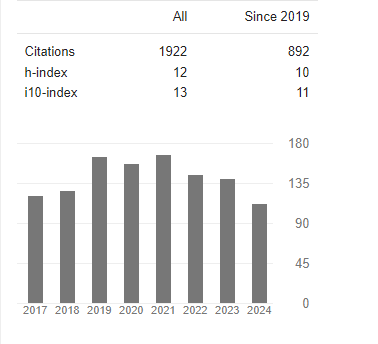Carbon Dots from Willow Leaves for Fe3+ Detection: A Comprehensive Undergraduate Experiment in Analytical Chemistry
Abstract
Fengshou Wu, Jinjin Zeng and Genyan Liu
The nitrogen-doped carbon dots (N-CDs) were prepared by one-step hydrothermal method at 200 °C for 6 h using willow leaves as carbon source and urea as nitrogen source. The structure of the as-prepared N-CDs was characterized by transmission electron microscopy (TEM), Fourier transform infrared spectrum (FT-IR), X-ray photoelectron spectrum (XPS) and UV-vis absorption spectrum. The maximum fluorescence excitation and emission wavelengths of N-CDs were located at 380 nm and 453 nm, respectively. The fluorescence quantum yield was calculated to be 8.6%. Based on the fluorescence quenching effect of N-CDs toward Fe3+, a new and rapid detection method for Fe3+ was established. The results showed that using N-CDs as fluorescent labeling, the linear relationship for Fe3+ detection was obtained in the range of 75 to 300 μM, and the detection limit reached 3.19 μM. This comprehensive experiment covers the preparation process, characterization methods, experimental detection and other aspects of nanomaterials, which can stimulate the students’ enthusiasm to explore and innovate, cultivate the students’ ability to analyze and solve problems independently, and promote the integration of students’ theoretical knowledge and practical ability. It not only exercises students’ comprehensive ability to use knowledge and experimental skills, but also helps to broaden students’ academic vision.



